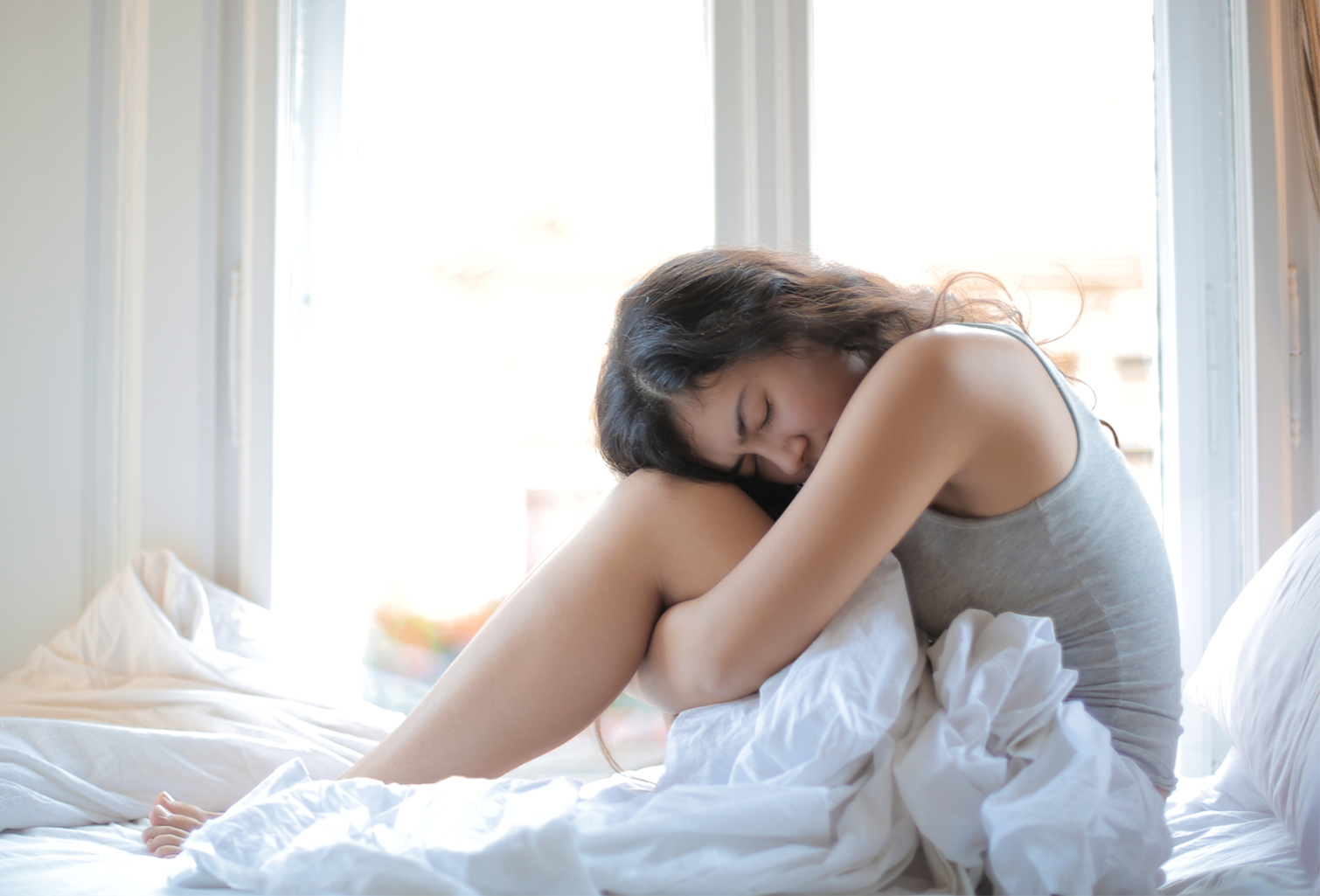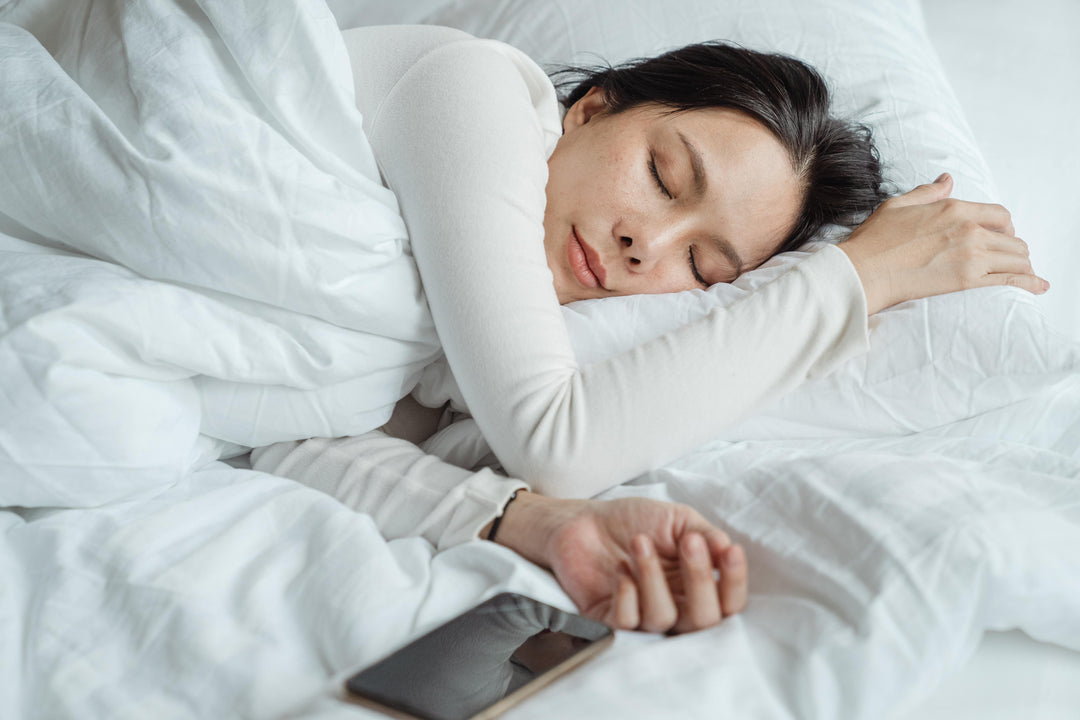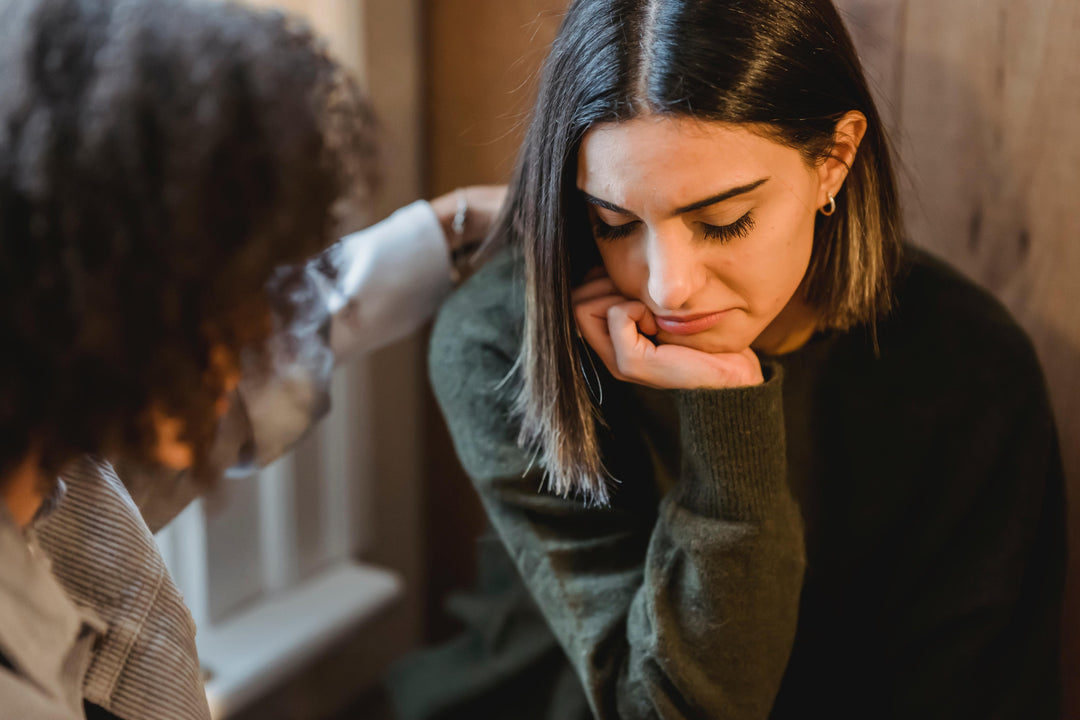Period pain - everything you need to know

Menstrual discomfort like muscle cramps in the lower abdomen is a common part of the menstrual cycle. The menstrual pain usually comes before and during your period and there are multiple ways to relieve it. The most common type of menstrual pain is cramps in the stomach area however, the pain can also spread to your back, thighs and groin. If you experience discomfort due to your menstrual pain there are several ways for you to relieve the pain.
What are period pains?
Menstrual pain means that you feel pain in your lower abdomen, back and sometimes thighs during your menstrual cycle. From the time girls enter puberty until they reach menopause, their periods come about once a month. Menstrual pain varies from person to person, some people have pain throughout their entire period, some just at the beginning while others don’t experience any at all.
Why do you experience period pains?
Menstrual pain occurs when the uterus contracts to expel the lining. The blood vessels lining your womb are then compressed and the blood supply is temporarily cut off. This means that the womb does not receive oxygen through the blood and instead starts to release chemicals that trigger pain.During your period the body produces a chemical called prostaglandins that encourage the uterine muscles to contract further which increase the level of pain.
Symptoms of menstrual pain
Not everyone feels period pains. Some people have pain throughout their period, some have no pain at all and some feel the pain during the first few days of their period. Menstrual pain is usually most severe during the first few days of the period.
When you have period pains, you may feel the following symptoms:
- Stomach, thigh, groin or back pain
- Cold sweats
- Vertigo
- Nausea
- Diarrhea
What helps against menstrual pain?
There are many ways to alleviate menstrual pain. You can use either medicines or tried and tested techniques such as a heating pad. Experiment and try to find out what works best for you. Below are some tips for relieving menstrual pain.
- Painkillers for menstrual pain
You can use over-the-counter painkillers when you have period pains, such as ibuprofen or naproxen. As soon as you feel the pain, you can take a tablet in order to relieve it. Talk to a doctor or midwife before taking any painkillers for an extended period of time and always follow the instructions on the packet to know the appropriate dose.
- Use heat
Heat relaxes the muscles, which can relieve menstrual pain. For example, you can put a heating pad or hot water bottle on your stomach or back. You can also take a warm bath or shower.
- Exercise
It's good to move around and exercise regularly, even during your period. Exercising during your period in various ways can relieve the pain. This does not mean that you need to exercise hard, a long walk may be enough.
Severe menstrual pain
If you are experiencing extreme menstrual pain and over-the-counter medicines are not relieving it, you may need other treatment that can reduce or eliminate your period. There are different types of treatment however, two of them are contraceptive or TENS stimulation.
- Preventive means
You can reduce or eliminate your period completely with contraceptives to relieve the pain. In some cases the pain even disappears completely. A midwife will help you find out which type of contraceptive is best for you, and then prescribe it for you. The contraceptive pill, the contraceptive patch, the contraceptive ring and the contraceptive stick are examples of contraceptives that prevent you from ovulating and therefore from having your period. There are hormonal IUDs, oestrogen-free contraceptive pills and contraceptive sticks that cause you to bleed less, bleed less often or not have a period at all.
- Treatment with TENS
TENS (Transcutaneous Electrical Nerve Stimulation) is a drug-free pain relief method. It consists of a device connected to small discsplaced on the skin that sends a weak current between them. The current activates the body's own pain relief system, blocking pain signals and temporarily reducing pain. The treatment may need to be repeated a few times a day, duringthe days of the month that you experience menstrual pain. In some regions, you may be prescribed a TENS device, sometimes you may need to buy it yourself. Contact your health centre or midwife for help.
If you have severe menstrual pain, it may be due to the following:
- Endometriosis - a disease in which tissue similar to the lining of the uterus grows outside the uterus and causes pain while ovulating or during menstruation.
- Myoma, which means that there is a muscle knot in the uterus
- Inflammation of the fallopian tube or inside the uterus
Menstrual pain without a period?
There are various explanations for why you may experience period pain without having a period. It could be that hormonal imbalances linked to the menstrual cycle, this can also affect the brain and cause mood swings. Most of the time there is no need to worry, but if the pain is severe and your period doesn't come for a few months in a row, you should contact a doctor.
If you have period pains but no period, it may be due to the following reasons:
Missed ovulation
Sometimes you can have all the symptoms of your period without it happening because you are not ovulating. This is common in people who have irregular periods and about 10-20% of those with regular menstrual cycles experience this.Thyroid disorders
The thyroid gland, located in the neck, controls many functions in the body, such as the menstrual cycle and metabolism. If the thyroid gland develops problems, the menstrual cycle can also be affected. The thyroid affects the brain and if the thyroid is unbalanced, you may experience mood swings similar to PMS. Your uterus may have prepared to receive an egg even though you are not ovulating, which can cause menstrual pain without a period.Preventives
A common side effect of hormone-based contraceptives is missed periods. However, it is also common to have less irregular periods and spotting in between periods. This can cause PMS-like symptoms even if you don't have a period.Stress
Stress increases cortisol levels, which affects the hormonal balance and the hormones that control ovulation and the uterus.Ovarian blisters
Every month, the ovaries create vesicles that release an egg. After the egg is released, the cysts dissolve on their own, but sometimes things don't work out as planned. The fluid-filled cysts remain, usually they are not dangerous but if you feel stomach pain you may need treatment.Endometriosis
One in ten people who have periods also have endometriosis. If you have endometriosis, it means that the uterine lining is growing outside the uterus, this is often treated to relieve the pain. A common symptom of endometriosis is intense pain during menstruation.How long do menstrual pains last?
In general, women start menstruating between the ages of 11 and 14 and continue until they reach menopause at the age of 45-50. At this point, menstruation stops and so do menstrual pains. During puberty, the cycle can be longer than usual and it can take time for the cycle and menstruation to become regular. After puberty, almost all people with periods have a regular cycle. A regular cycle means that the duration in between periods is the same and that you menstruate approximately the same number of days. For some women, their periods change after they give birth and the menstrual pain may even stop.
When a woman approaches menopause, her periods may become either heavier, smaller, come more often or less frequently. Fluctuations through life are normal and all this of course affects menstrual pain.
When should I seek treatment?
If any of the following apply to you, contact a healthcare provider, gynaecological clinic or midwifery clinic.- Over-the-counter painkillers do not help with menstrual pain.
- If you suddenly get period pains without having had them before
If you are in primary or secondary school, you can contact the student health service or a youth clinic. If you are at university, you can usually contact the student health service at your university or college.




 EUR
EUR



Lascia un commento